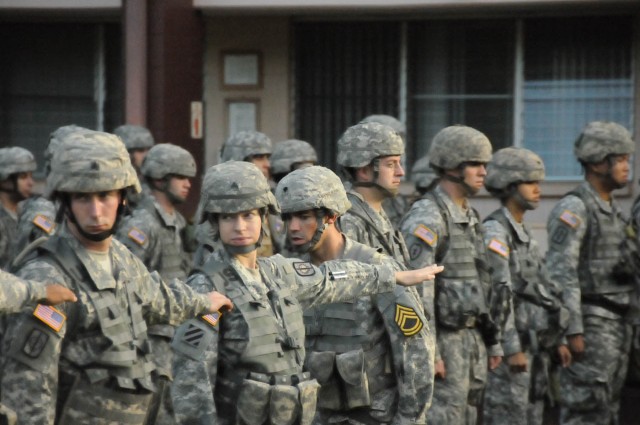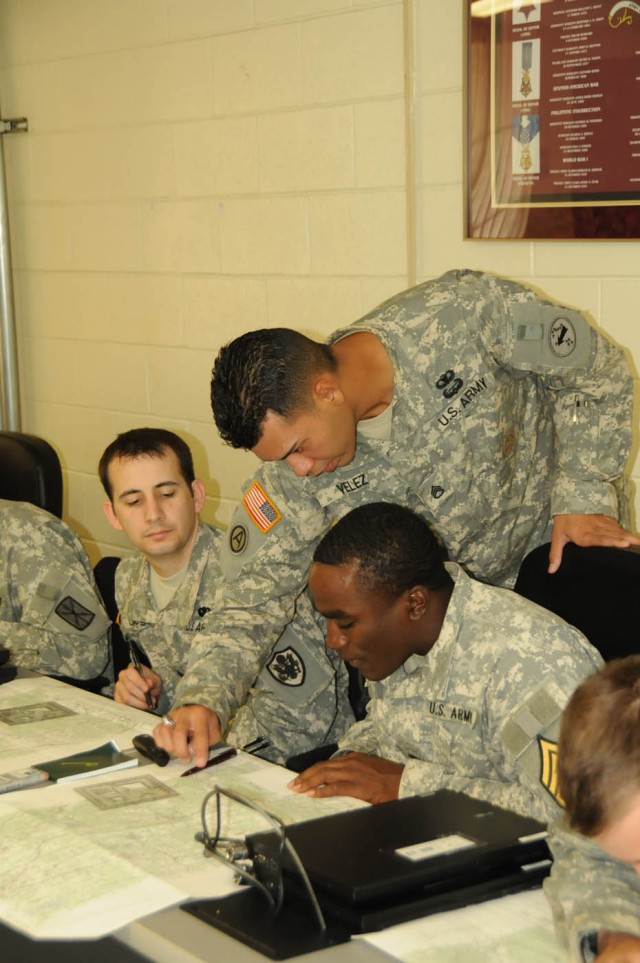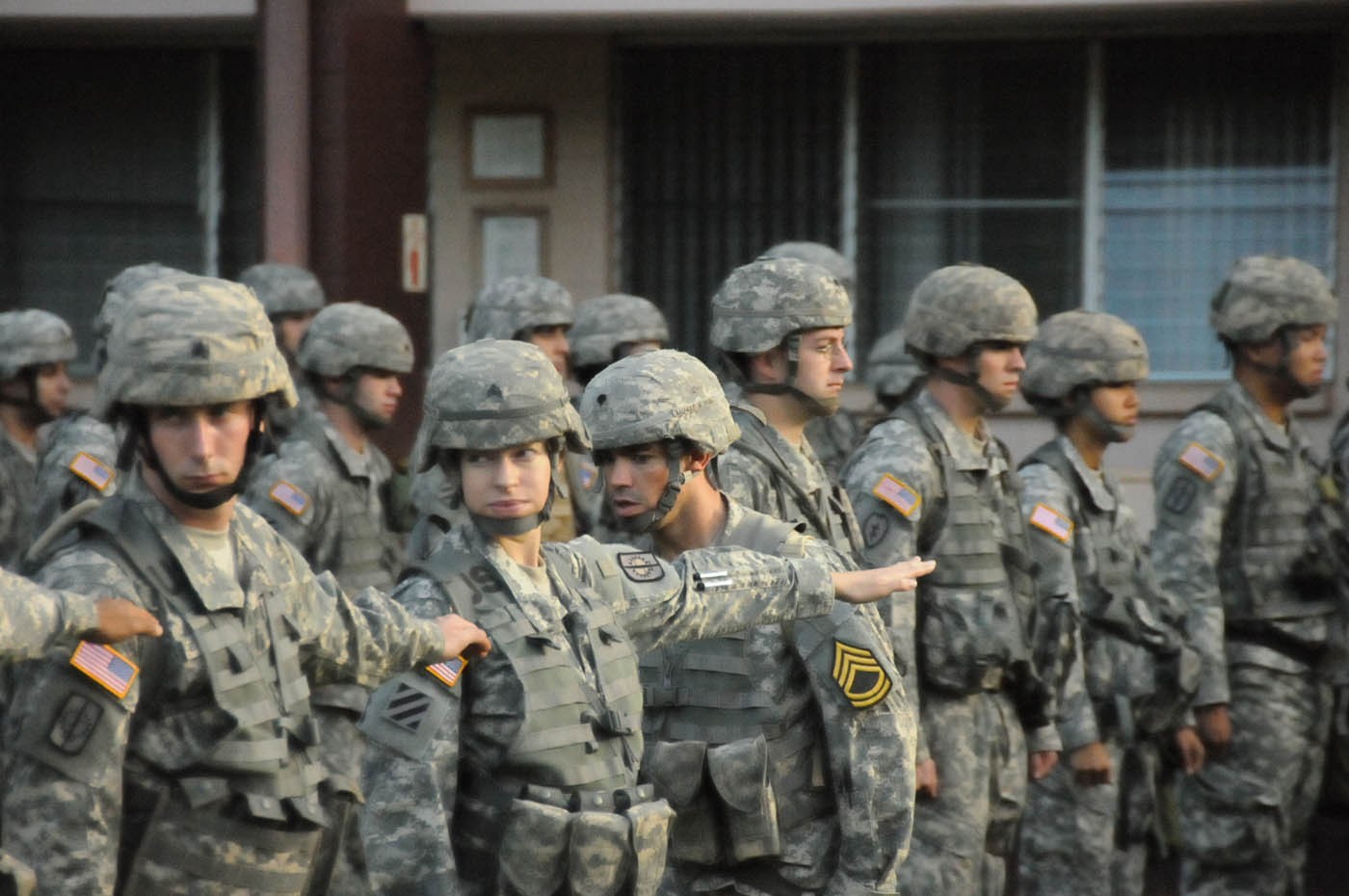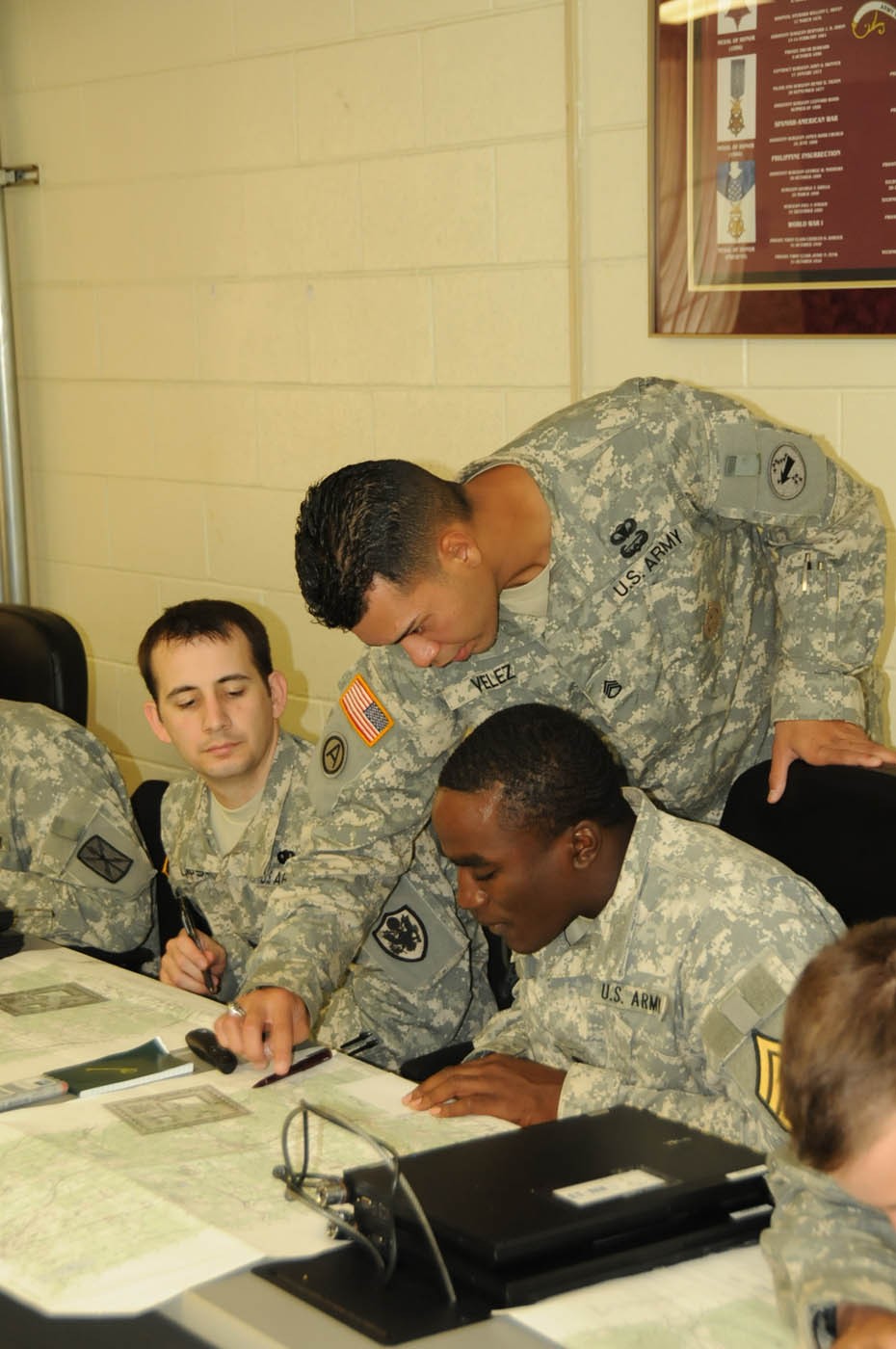SCHOFIELD BARRACKS, Hawaii (Jan. 11, 2010) - Morning reveille at the Noncommissioned Officer Academy, Hawaii does more than signal the start of a new day around the school house, it heralds a change of procedures at the school, keeping pace with today's Army.
"The Army knows Soldiers returning from deployments have lost a lot of time to spend with their families," said Staff Sgt. Joel Velez, small group leader, NCOA. "Warrior Leader's Course (WLC) is now a 15-day course, which allows Soldiers more time to spend at home and still receive their military education and training here at the academy."
Gone are the 30-day cycles and on campus living, replaced with a demanding 15-day curriculum, on-site wi-fi access, and the opportunity for sergeants to spend their off-duty time at home instead of at the academy barracks.
"I like that we have the opportunity to go home," said Sgt. Reginald Dixon, Company A, 325th Brigade Support Battalion. "Do I go home though' No, I stay here at the academy, but it's good to have the option there to rest at your home. If you're responsible, you won't abuse that privilege."
WLC may have transformed into a 15-day course, which does create longer days, however, the knowledge and foundation for the career growth of new sergeants still remains.
"Some of the additional training we added in the past was cut out (such as drill and ceremonies) but this gives us the opportunity to concentrate on the specific tasks required for leaders in today's Army," said Sgt. Maj. James Fraijo, NCOA commandant.
The leader's tasks that are required in the schoolhouse are geared to what a sergeant's role will be in a given situation.
"How do you deal with training now as a leader'" Fraijo said. "In a contemporary environment, how do you apply all the things you are learning here' Experiences in combat and how you will use what you learn here is what we focus and hone in on for sergeants."
Although the benefits for attending WLC are many, one thing key thing for any sergeant climbing through the ranks is the foundation the course brings to a Soldier's career.
"The Warrior Leader Course builds the foundation and the knowledge a sergeant requires to train and lead Soldiers," Fraijo said. "Some of the same tasks we train here (map reading, giving classes, and mentoring Soldiers) are going to be built upon throughout a Soldier's career."
New sergeants can prepare themselves for WLC by refreshing themselves with the administrative tasks leaders need, such as counseling, in-ranks inspections, NCO evaluation reports, and time management.
"Task, conditions, and standards are crucial in training," said Spc. Christine McKenzie, Headquarters and Headquarters Company, 8th Theater Sustainment Command. "Learning the proper ways to give classes and put out training can really help you a lot before you come here."
Despite the long school days, and time constraints for the information put out, Soldiers like McKenzie are enjoying their time learning to become leaders. Warrior Leader Course serves as the first step for many young sergeants in the NCO education system experience in their growing military careers.
"The studying a lack of sleep can be a challenge, but it's how you apply your time that gets you through each day," Mckenzie said. "It's hard but you learn a lot, but for me this is the stepping stone, this is what will help me for years to come in the future."
She added, "I can't wait to conduct P.T., experience the field training exercise, graduate and take what I learned back to my unit."






Social Sharing